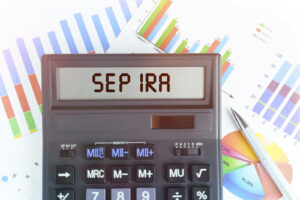Retirement Planning – SEP IRA
 Our Uncommon approach to personal finance does not mean you should ignore the more traditional methods of saving for retirement. There is a place for that in your portfolio.
Our Uncommon approach to personal finance does not mean you should ignore the more traditional methods of saving for retirement. There is a place for that in your portfolio.
One of the most common places to invest retirement dollars is the Individual Retirement Account – the IRA. The thing to know is that IRAs are not one-size-fits-all. You can read about SIMPLE IRAs in last week’s article, but right now we want to explore the SEP-IRA.
In the post-WW2 era, through the mid-seventies we’d say, the company pension was a mainstay of retirement planning. But for decades now, companies have been moving (more like running) away from defined benefits plans—aka pensions—to 401(k)s. And while this has been happening, a parallel phenomenon has been happening. More and more of the workforce is self-employed or running a very small business with just a handful of employees.
For a self-employed person or an employer with few employees, a SEP (Simplified Employee Pension) IRA is an accessible alternative to the traditional pension and 401(k). If you are risk-averse, want to provide a portion of retirement savings for you and your employees, the SEP can be a good option. Here is what you need to know about SEP-IRA limits, benefits, and eligibility requirements.
Limits
If you are concerned about building up a retirement nest egg and want to be generous to employees, A SEP IRA has much more generous limits than a standard or SIMPLE IRA. In 2021, contributions can total 25% of compensation, up to $58,000. The amount of compensation you can use to calculate the 25% limit is limited to $290,000 in 2021.
Benefits
A SEP-IRA can be invested in many different things, depending on the plan manager. You can put the money into a mutual fund, ETFs (exchange-traded funds), or individual stocks and bonds. The employee or you as a self-employed person are in the driver seat with a SEP. A SEP does not have the start-up and operating costs of a conventional retirement plan, and as noted above, you can set it up to defer taxes on up to 25% of compensation.
Eligibility
Employees are eligible under the following conditions. Interestingly, an employer can use LESS restrictive requirements, but they can’t create MORE restrictive requirements.
Participation is open to an employee who
- Has reached age 21
- Has worked for the employer in at least 3 of the last 5 years
- Received at least $650 in compensation for 2021 from the employer during the year ($600 for 2020)
SEP IRA Pros:
- Easy to set up with IRS form 5305-SEP
- Low administrative costs
- Flexible annual contributions – a SEP is a good plan if cash flow is an issue
- The employer must contribute equally for all eligible employees
SEP IRA Cons:
- No Roth version. With a Roth, you can opt to pay taxes on contributions now and take distributions tax-free when you retire.
- There are no catch-up options for people 50 and over, as there are with other IRAs
- For business owners who contribute to your own plan, you are required to make proportional contributions for each eligible employee.
- Like with traditional IRAS, there are minimum distributions required after age 72.
Is SEP Right for You?
We are big on making as much of your money as accessible as possible to you regardless of your age. That said, there are great reasons—especially if you are the owner of a small business—to take the tax advantages of a SEP IRA and build a retirement nest egg as part of an overall financial strategy.